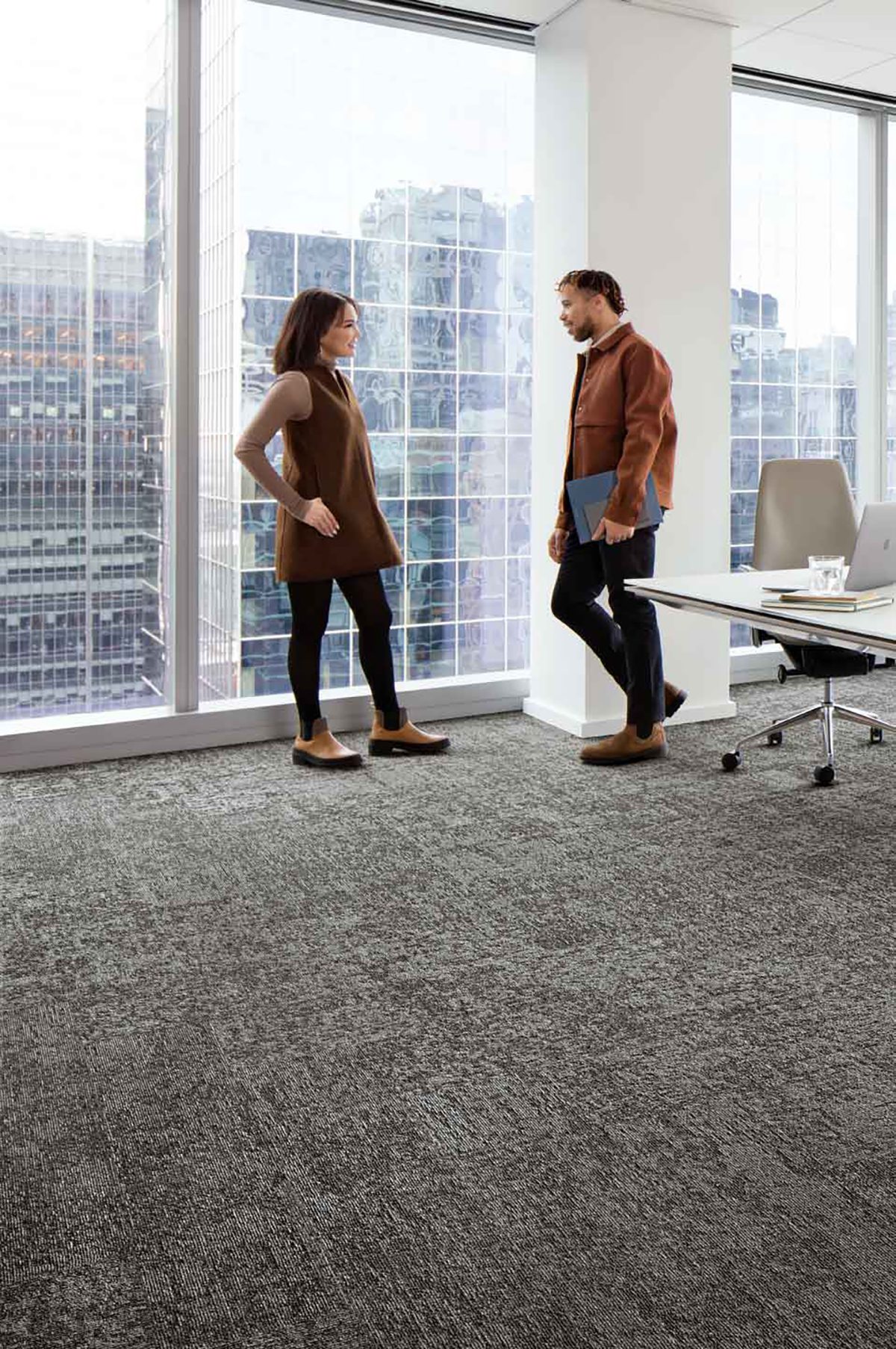Becky Gordon, Regional Sustainability Manager UKIME at Interface, discusses how the manufacturer is making the step from carbon neutral to carbon negative products.
In association with![]()
The announcement of the upcoming Environmental Audit Committee’s inquiry into sustainability in the built environment is an opportunity to shine a new spotlight on how we look at carbon across the industry.¹ The government’s industry-wide call out for evidence will explore routes to net zero for our future building needs, from the use of low carbon materials to policies that minimise the whole-life carbon impact of new buildings.
According to Architecture 2030, the built environment is responsible for nearly 40 per cent of all global carbon emissions², so there’s no disputing that addressing embodied carbon will be central to this and a necessary step if we are to meet 2050 net zero emissions target³. Looking at the way we use materials, and in particular nature-based materials, to reduce the carbon impact of a building will be key.
Using nature to innovate
Exploring our relationship with carbon and looking at the way it is used in materials gives us an opportunity to move away from simply doing less harm to the planet and towards actually benefitting it. By learning to work with carbon as a resource, we can use it as a building block to engineer better products.
It’s also essential that we work to not only reduce carbon emissions, but find creative ways to remove carbon from the atmosphere. This means not stopping at carbon neutral products; instead, we need to create more solutions that work to actively stop carbon from causing global warming.
Over the last few years at Interface, we have studied nature to reimagine our product design, development and manufacturing to achieve an important step in our sustainability journey: the creation of our first collection featuring carbon negative carpet tiles, Embodied Beauty™. The collection has been designed to restore the planet’s health and lower the carbon footprint of commercial spaces, supporting businesses in making sustainable flooring choices without sacrificing on aesthetics.
All seven styles of Embodied Beauty™ are carbon neutral across their full product life cycle through Interface’s Carbon Neutral Floors™ programme, but importantly, three are carbon negative from cradle to gate. Put simply, there is less carbon in the atmosphere after manufacturing these tiles than there was before they were made.
The journey to carbon negative
Our work with carbon negative materials started in 2020, with the launch of our CQuest™Bio backing. The backing achieves recycled and biobased content of 92.8 per cent on average, which in turn reduces the carbon footprint of the carpet tile by a third. CQuest™BioX is the evolution of this work and is the most revolutionary element of Embodied Beauty™’s design. It contains a higher percentage of carbon negative materials, enabling us to create our first product that is carbon negative cradle to gate.
The three carbon negative styles within the collection – Shishu Stitch, Tokyo Texture and Zen Stitch – have a negative carbon footprint (cradle to gate) of -0.30kg. As with all Interface carpets, the collection also has an Environmental Product Declaration which contributes to standards including WELL, LEED and BREEAM – important considering businesses are increasingly under pressure to make a clear and public declaration about their sustainability strategies. Not only that, but Embodied Beauty™ moves us one step closer to our goal of turning off the tap to virgin petrochemicals, containing an increased rate of recycled and bio-based content – as high as 90.4 per cent.
Supporting smart product choices
As a manufacturer, we want to be part of a collective that’s driving real change towards a more sustainable future. When it comes to addressing climate change across the built environment, it starts with taking a carbon-first approach to creating spaces and choosing the products to go in them.
However, to make more sustainable product options viable in practice, it’s vital that they’re compatible with wider design trends. One such trend that continues to grow is ikigai, a Japanese concept related to ‘having a purpose’ and connecting with others and with nature. That’s why with Embodied Beauty™ we’ve tried to encapsulate the idea of working in line with nature. Reflecting Japanese aesthetics of minimalism, restoration and the organic beauty of the natural world, the collection offers a range of textural and colour options and ensures designers can choose the sustainable option without compromising on style, performance or function.
We all have our part to play in the fight against climate change, and at Interface we want to support others in making sustainable choices and drive collective change across the industry. Embodied Beauty™ represents a new milestone in this journey. This innovative way of manufacturing proves that we can use carbon as a building block to engineer better products and help to create beautiful, more sustainable spaces.
Contact Details
To find out more about Embodied Beauty™ and Interface’s sustainability journey, please visit the Interface website.




















